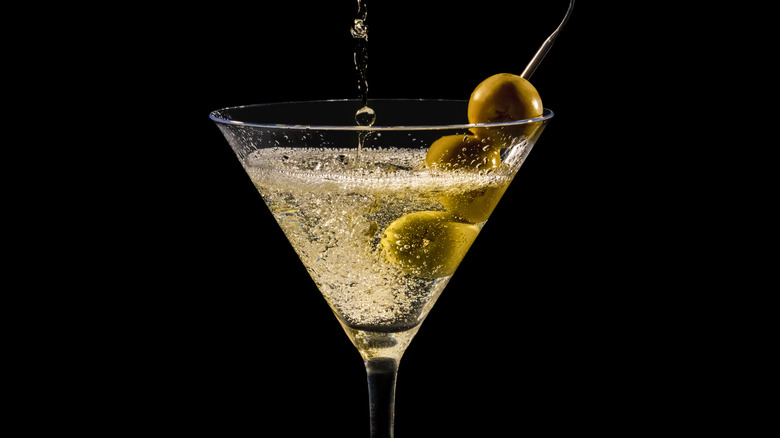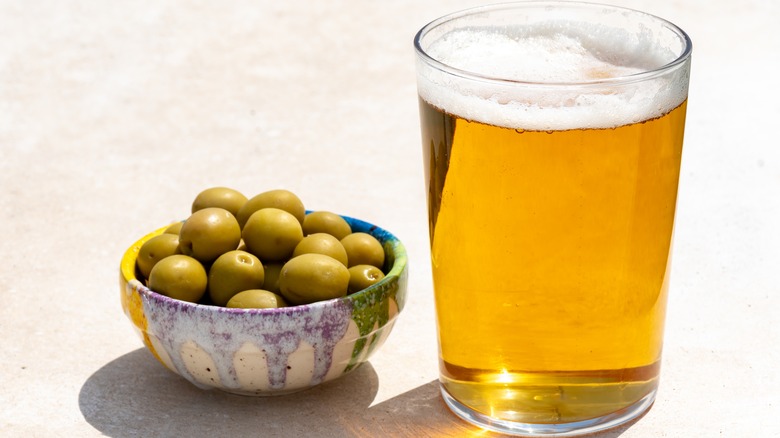The Beertini Is The Cocktail That's The Best Of Both Worlds
Evidence shows beer was first discovered by the age of Sumerians thousands of years ago, and today, there are hundreds of brands and beer styles, and more seem to be popping up at rapid speed. As the idea of beer has evolved, so have the various recipes to try and what to pair it with (think ginger ale for a shandy and lemonade for a Radler). Still, unless you're from a specific part of the U.S., you might be unfamiliar with a drink called a Beertini. A Beertini isn't quite as fancy as it sounds and doesn't require a cocktail shaker. All you need is two ingredients, and you're good to go.
First, you'll want to find a 12-ounce can of cold beer, preferably an American-style lager (think Coors Light or Bud Light). Pour the canned beer into a glass, preferably chilled. Finally, and most importantly, you'll need a jar of green olives. Scoop out 4 to 5 olives and put them in the glass of beer. If you like the brine taste, pour a dash of olive juice. The results? As you drink the beer, you'll notice it has a delightful salty taste, which is delicious and a quick addition to elevate your brewski.
Where did the beertini originate from?
Adding garnishes to beer isn't a new discovery, but combining green olives and beer might be foreign to people who don't live in the Midwest. As a fellow Midwesterner-turned-Pacific-North-Westerner, I can confirm Beertinis aren't well-known in every area. Although the origins of when people started drinking Beertinis are unknown, the pairing has been a popular drink to enjoy in bars all over the Midwest for years, where bartenders won't give you a dirty look when ordering one.
The evolution of Beertinis hasn't really changed all that much. Some Midwesterners prefer a pickle spear and green olives in a beer for an extra salty sip. There's also the option of leveling up to a handful of garlic or bleu-cheese-stuffed green olives to expand the beer's flavor. Whatever your journey, hopefully, becoming a fan of Beertinis will give you a new appreciation for the Midwest and (to some) questionable American-style lagers.

